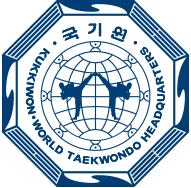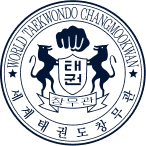Here are some of the best Taekwondo instructors in the world demonstrating how to do the Taekwondo forms/poomsae. We don't recommend you try to learn patterns from here, but it can help you remember ones you've learnt in class.
This is the first pattern of Kukkiwon Taekwondo, taught to yellow stripe students for promotion to yellow belt. Important things to note is that all the movements to the sides are in short stance (ap seogi) and all the movements to the front and back are in long stance (ap kubi)
This is the second pattern of Kukkiwon Taekwondo, taught to yellow belt students for promotion to green stripe. Important thing to note when moving to the side in low block (in the first and second side-to-side sequences) it's short stance, then long stance. Going forward and backwards is in short stance in this pattern.
This is the third pattern of Kukkiwon Taekwondo, taught to green stripe students for promotion to green belt. After this pattern, the moves involved really change from the basics that are used in the first three. This is the first pattern where not all of the moves are done with a closed fist. Try to keep the fist clenched though throughout the whole pattern except when it's needed to be opened. Important thing to note is that the foot should slide forwards after the knifehand outer forearm block, never move the back foot backwards.
Taegeuk 4 is a complete change from the previous patterns, involving lots of simultaneous hand movements and side kicks for the first time. This can be a difficult pattern for green belt students to learn for promotion to blue stripe. Important note is that examiners are looking for balance and core strength during the pattern, in particular during the two side kicks and reverse inward blocks in back stance.
Taegeuk 5 is for blue-stripe practitioners testing for blue belt. Blue belt is past the half way point in coloured belt ranks, so students should be preparing towards black belt. Elbows are introduced as are simultaneous kicking and hand striking.
This form for blue belts promoting to red stripe progresses in to counter twisting (blocking one way while moving the body in the opposite direction). It can be difficult to generate power this way, so it takes practice. It also has a slow breathing exercise - it's important not to rush this.
Taegeuk 7 is all about transitions, there are a lot of up right movements between positions for the candidate for red belt to master. Tiger stance is introduced and should be stable and fluid.
As the last pattern before the black belt sequence is learnt, this pattern is about mixing fast with slow (does the practitioner rush the slow or can they control themselves) and being without a stable base, do they have the strength and balance to kick while jumping.
Koryo is for black belt 1st Dan candidates. 1st Dan is the first rung on a new ladder of black belt ranks and Koryo is about proving that the holder can perform complex technical movements. This is the way of Taekwondo - technique first, then power, then speed.



